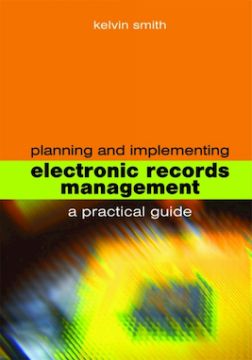
Additional Information
Book Details
Abstract
Many organizations are moving away from managing records and information in paper form to setting up electronic records management (ERM) systems. There is a range of reasons for this: economic considerations may be the driver for change, or government policy initiatives may be coming into play. Whatever the whyfor in your organization, this book provides straightforward, practical guidance on how to prepare for and enable ERM. It sets out and explains the issues organizations need to consider in selecting a system, and the procedures required for effective implementation. Help is also given with the complexities of managing hybrid records during an interim period between paper and electronic record management.The book is divided into three main parts covering the preparation for ERM, and its design and implementation. The key areas covered are: the underlying principles; the context; making a business case for ERM; the main issues for design; the information survey; the file plan; appraisal methodology; preservation; access; the main issues for implementation; project management; procurement; change management; training; the future of information management. This essential guide should be on the desk of any library and information professional, records manager, archivist or knowledge manager involved in planning and introducing an ERM system, whether in a public or private sector organization.
"For any organization intending to carry out an electronic records management implementation, or even simply just thinking about it, this book is invaluable…Highly recommended - Read this book and you may be able to save yourself a consultant's fee!" - HEA-ICS
Kelvin Smith is Head of the Accessions Management Unit and Records Management Consultant in the Records Management and Cataloguing Department of The National Archives, Kew.
